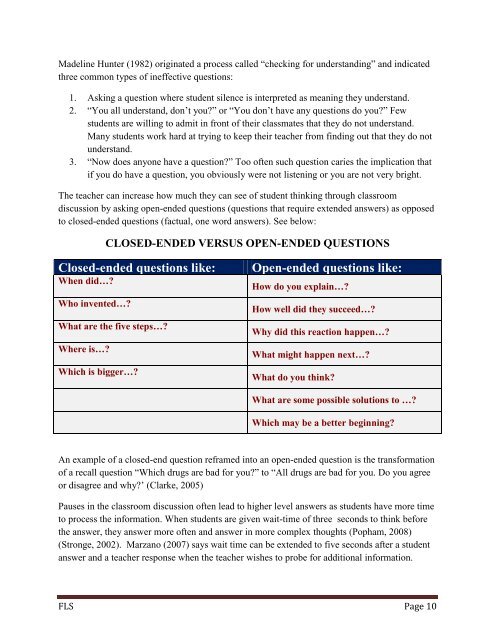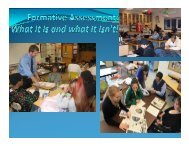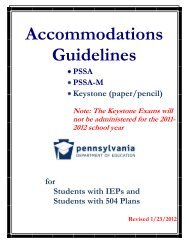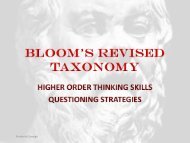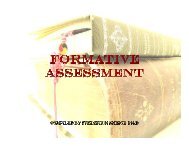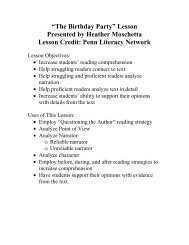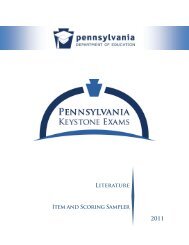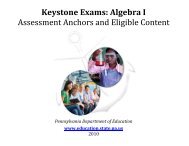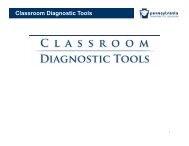FORMATIVE ASSESSMENT (Assessment for learning)
FORMATIVE ASSESSMENT (Assessment for learning)
FORMATIVE ASSESSMENT (Assessment for learning)
Create successful ePaper yourself
Turn your PDF publications into a flip-book with our unique Google optimized e-Paper software.
Madeline Hunter (1982) originated a process called “checking <strong>for</strong> understanding” and indicated<br />
three common types of ineffective questions:<br />
1. Asking a question where student silence is interpreted as meaning they understand.<br />
2. “You all understand, don’t you?” or “You don’t have any questions do you?” Few<br />
students are willing to admit in front of their classmates that they do not understand.<br />
Many students work hard at trying to keep their teacher from finding out that they do not<br />
understand.<br />
3. “Now does anyone have a question?” Too often such question caries the implication that<br />
if you do have a question, you obviously were not listening or you are not very bright.<br />
The teacher can increase how much they can see of student thinking through classroom<br />
discussion by asking open-ended questions (questions that require extended answers) as opposed<br />
to closed-ended questions (factual, one word answers). See below:<br />
CLOSED-ENDED VERSUS OPEN-ENDED QUESTIONS<br />
Closed-ended questions like:<br />
When did…?<br />
Who invented…?<br />
What are the five steps…?<br />
Where is…?<br />
Which is bigger…?<br />
Open-ended questions like:<br />
How do you explain…?<br />
How well did they succeed…?<br />
Why did this reaction happen…?<br />
What might happen next…?<br />
What do you think?<br />
What are some possible solutions to …?<br />
Which may be a better beginning?<br />
An example of a closed-end question reframed into an open-ended question is the trans<strong>for</strong>mation<br />
of a recall question “Which drugs are bad <strong>for</strong> you?” to “All drugs are bad <strong>for</strong> you. Do you agree<br />
or disagree and why?’ (Clarke, 2005)<br />
Pauses in the classroom discussion often lead to higher level answers as students have more time<br />
to process the in<strong>for</strong>mation. When students are given wait-time of three seconds to think be<strong>for</strong>e<br />
the answer, they answer more often and answer in more complex thoughts (Popham, 2008)<br />
(Stronge, 2002). Marzano (2007) says wait time can be extended to five seconds after a student<br />
answer and a teacher response when the teacher wishes to probe <strong>for</strong> additional in<strong>for</strong>mation.<br />
FLS Page 10


